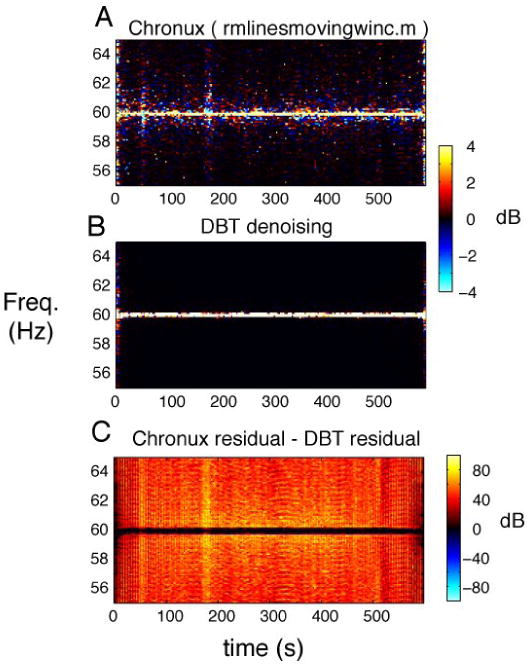Figure 8.

Comparison of time-windowed and frequency-windowed adaptive filters applied to line noise in electrophysiological data. Filtering was applied to 60 Hz line-noise contaminated ECoG data, whose frequency and amplitude varied slightly over time. A: A denoising routine implemented in the Chronux toolbox (rmlinesmovingwinc.m) removed sinusoidal signal components within finite overlapping 12 s segments with 6 s overlap. Significant distortion of neighboring frequencies results from spectral leakage associated with finite windowing. Plots show log power difference for unfiltered and filtered data. B: DBT denoising (bandwidth = 1/6 Hz) avoids spectral leakage artifacts. C: A comparison of power in the noise signals isolated by respective filters reveals much greater energy outside the range of line-noise in the time-windowed method as compared with the DBT approach, a consequence of spectral leakage in the former.
